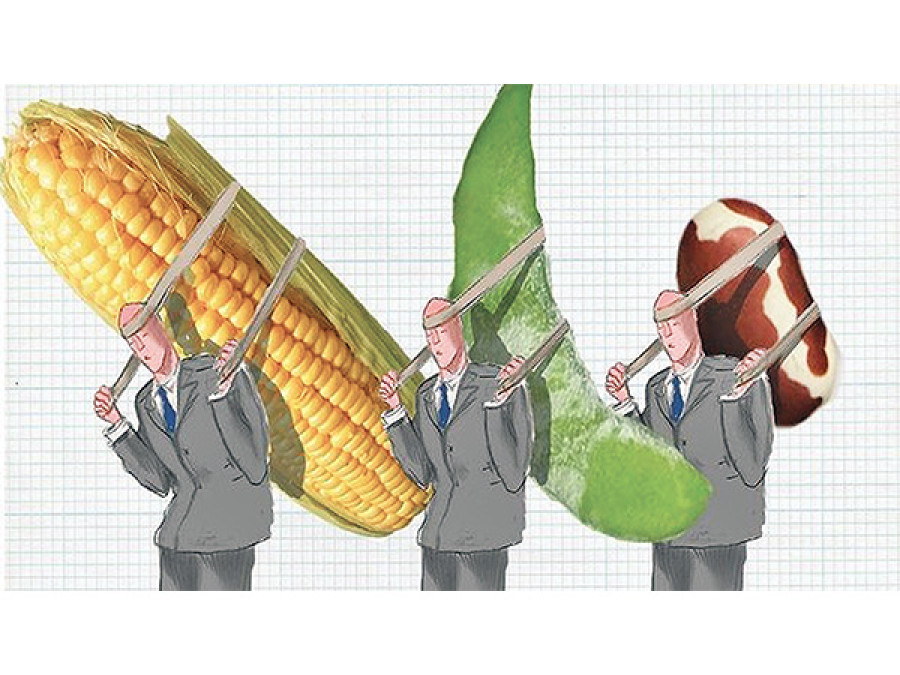Opinion
The right price
A sound agricultural pricing policy can help achieve self sufficiency in food grains and increase their export potential.
Nanu Jha
In this regard, an agricultural price policy becomes extremely significant, since the successful implementation of planned projects is largely dependent on the government’s control of prices. Nepal has been exercising various measures that influence the level of farm prices and consequently, the income of producers. These measures are generally adopted to determine prices of farm products, such as food grains, rape seeds, sugarcane, and milk, rather than commodities such as fruits, vegetables, eggs, and meats. The objective is to improve agricultural incomes as a sequel to increasing production and productivity. In developed countries like the US, Canada, and in Europe, where farm incomes badly lag behind non-farm incomes, the main objective of the pricing policy is to raise farm incomes so as to bring them in line with the income levels of the rest of the country. In poor countries like Nepal, over production is not the problem. The objective of a support price policy, therefore, should be to increase agricultural production as well as productivity by creating economic incentives for farmers.
Keeping farmers afloat
Price support policies, especially for non-perishable commodities, are practiced by almost all governments of the world to keep national economic growth sound. When producers produce more than the need, the government should liable to procure this surplus so that production will not fall in succeeding years due to uncertainty of the surplus selling in the markets. This however, is very expensive on the part of the government and it also exerts pressure on the national budget. But it is important for farmers’ incomes and also for the development and growth of agriculture. The government’s price should have a fair profit margin at the cost of agricultural products such as food grains and raw materials as they enter the costs of living and the price of manufactured commodities, either in internal or foreign markets.
Take the example of India. Before 1947, India was importing food grains. In 1957, the government formed a food grains enquiry committee, which strongly recommended the setting up of a food grains stabilisation organisation. It also recommended the building up of buffer stock, licencing of wholesale traders, and fixing minimum and maximum price levels. Now, India has an Agricultural Price Commi-ssion (APC), which sets a balanced and integrated price structure in the perspective of the overall needs of the country and with due regard to the interest of producers as well as consumers.
Regarding farm produce price, Nepali farmers always demand sustainable prices for their products. Hence, the government had fixed minimum procurement prices for paddy and other crops, but these were not implemented well and failed to become established policy. Presently, sugarcane producers are demanding a sustainable procurement price for their produce, but this has not been fulfilled by the concerned authority. Thus, agriculture, it seems, has been unable to become a profitable and prestigious occupation in the country.
Efficient agriculture
Past experiences clearly show that a recession in agriculture automatically leads to a general recession in the country. Many economists have realised that “the rate at which farmers who have settled into traditional agriculture accept a new factor of production depends upon its profit with due allowance for risk and uncertainty, and in this respect the response is similar to that in modern agriculture. Harmful prices policies always impair the efficiency of agriculture”. A sound pricing policy would help to achieve self sufficiency in food grains, oil production, and also help increase the export potential of agricultural products. It would also help raise the economic level of producers, traders, agro-industrialists, and the national economy as a whole. If agricultural prices are kept within narrow limits, more than half the inflation battle will have been won.
Nepal needs to modernise agriculture to boost production and productivity, with significant industrial bases, where people can access employment and reduce poverty levels. This can be possible through a ‘National Agricultural Price Commission’ for the formulation and effective implementation of an agricultural price policy. This needs great commitment from the government, responsible and development-oriented politicians, policymakers, farmers, and also the media to highlight the importance of agricultural development and growth.
Jha is an agricultural economist and former Managing Director of National Seed Company Limited




 10.12°C Kathmandu
10.12°C Kathmandu










